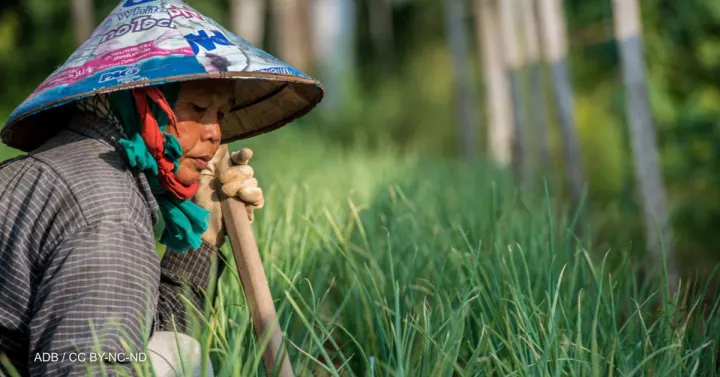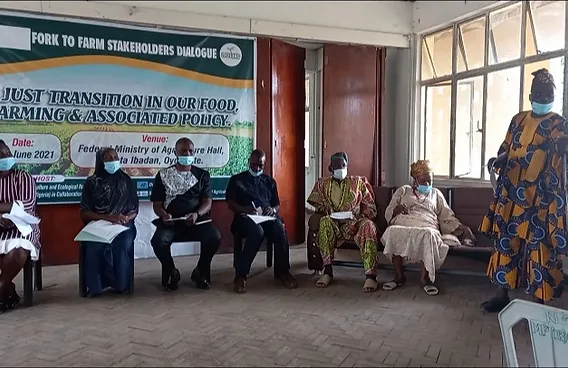As small-scale food producers, we have long understood the deep connection between food systems and biodiversity. But a disturbing cycle has emerged: Our global food system is now the primary driver of biodiversity loss, threatening the very ecosystems it relies upon. With the U.N. Biodiversity Conference, or COP16, underway in Cali, Colombia, it’s time for policymakers to recognize the critical link between food systems and biodiversity — and take decisive action.
Devex Dish
Your weekly newsletter on the transformation of the global food systemSubscribe now
One of the solutions to ensure a sustainable food system lies in agroecology, an approach that harmonizes food production with nature while prioritizing farmer agency and livelihoods.
We’ve seen that there is growing momentum to integrate food systems into climate and biodiversity policies. Policymakers at COP16 have the opportunity to make meaningful progress on protecting and restoring biodiversity while meeting the goals to end hunger and securing the livelihoods of smallholder farmers for generations to come.
From local farms to global fora
In 2021, a report by Chatham House revealed that our global food system is the primary driver of biodiversity loss, with agriculture alone identified as a threat to 86% of species at risk of extinction. Meanwhile, the decline of insects and other pollinators is threatening global crop production — this has an annual market value of between $235 billion and $577 billion, which would be affected.
Smallholder farmers are already investing $368 billion of their own incomes every year on measures to adapt to climate breakdown, including through conserving and restoring biodiversity. It has taken far longer for policymakers and the international community to take action on these interconnected crises, and to date, global efforts to protect and restore biodiversity remain siloed from initiatives aimed at sustaining food production and safeguarding food security.
As farming experts on the front lines of climate breakdown and biodiversity loss, we know agroecology has immense potential to offer solutions to these intersecting crises.
As a practice, science, and movement, agroecology is an approach that takes the whole food system into account and prioritizes farmer agency, rights, and livelihood equity, making it more transformative than any singular food system approach. Agroecology has been proven to deliver clear benefits to biodiversity, particularly at the landscape level, with links to enhancing soil health and preserving forests, water, seeds, and livestock.
Within our local communities and regional networks, we are already raising awareness, educating, and advocating for agroecological approaches to food production. However, we cannot carry this burden alone and call on governments to support us in this critical transition toward a sustainable future for all. Many governments working together can be transformative and the meeting in Cali presents this opportunity.
That’s also why we are at COP16, along with other community leaders and food justice advocates from all over the world, to make our demands heard, speak from our lived experiences, and draw the connections between our local realities and the global policy fora.
Our hopes for COP16
Right now governments are reviewing the state of implementation of the Kunming-Montreal Global Biodiversity Framework, or GBF, a landmark deal adopted at the previous COP, to protect and restore nature and secure the funds needed for this, particularly for biodiverse low- and middle-income countries.
“Agroecological farmers are providing unpaid environmental services to society as a whole, since our work involves producing food while mitigating the climate crisis.”—
At COP15, policymakers directly acknowledged the need to integrate food systems with climate and biodiversity policies by including it in GBF Target 10: “Enhance biodiversity and sustainability in agriculture, aquaculture, fisheries, and forestry.” National Biodiversity Strategies and Action Plans, or NBSAPs, are country policy plans at a national level, which provide direction on the management and protection of biodiversity.
As of August 2024, 9 out of 13 post-COP15 NBSAPs submitted to the CBD explicitly include agroecology within their national objectives.
To realize the full benefits of agroecology, policymakers must now include it as a food system approach across the entire NBSAPs. This will send a powerful message, inviting the international community to envision food systems as major contributors to the conservation, restoration, and enhancement of biodiversity.
A diverse set of approaches is needed to build strong foundations for agroecological interventions, which must encompass the whole food system from production to consumption, including supply chains, processing, and market incentives.
Policies should establish incentives for systemic changes, and support farmers and food systems players to transition away from fossil fuel-driven, input-intensive production practices. They should also facilitate knowledge exchanges and transfers, support agroecological enterprises and solidarity markets, and balance equity and efficiency outcomes.
To truly support the agroecological transition, strengthened financing models are essential. Transformative financing for biodiversity and agroecology must not only increase funding flows but also address issues of justice, historical legacies, and ecological debt.
After all, agroecological farmers are providing unpaid environmental services to society as a whole, since our work involves producing food while mitigating the climate crisis. This work needs to be supported and expanded.
To achieve all of the above, countries formulating their NBSAPs must prioritize the active participation of agroecology groups, including smallholder farmers, women, youth, Indigenous peoples, and local communities.
What’s next?
The success of COP16 hinges on whether policymakers will listen to the demands and the solutions from those of us on the front lines of climate and ecological breakdown.
COP16 will be a key milestone for our planet’s biodiversity — but it must also be a unique moment to elevate the role that food systems can play. Only by recognizing the interdependence of nature and food, and meaningfully including food producers and community leaders in its dialogues, will COP16 accomplish what it has set out to achieve.



